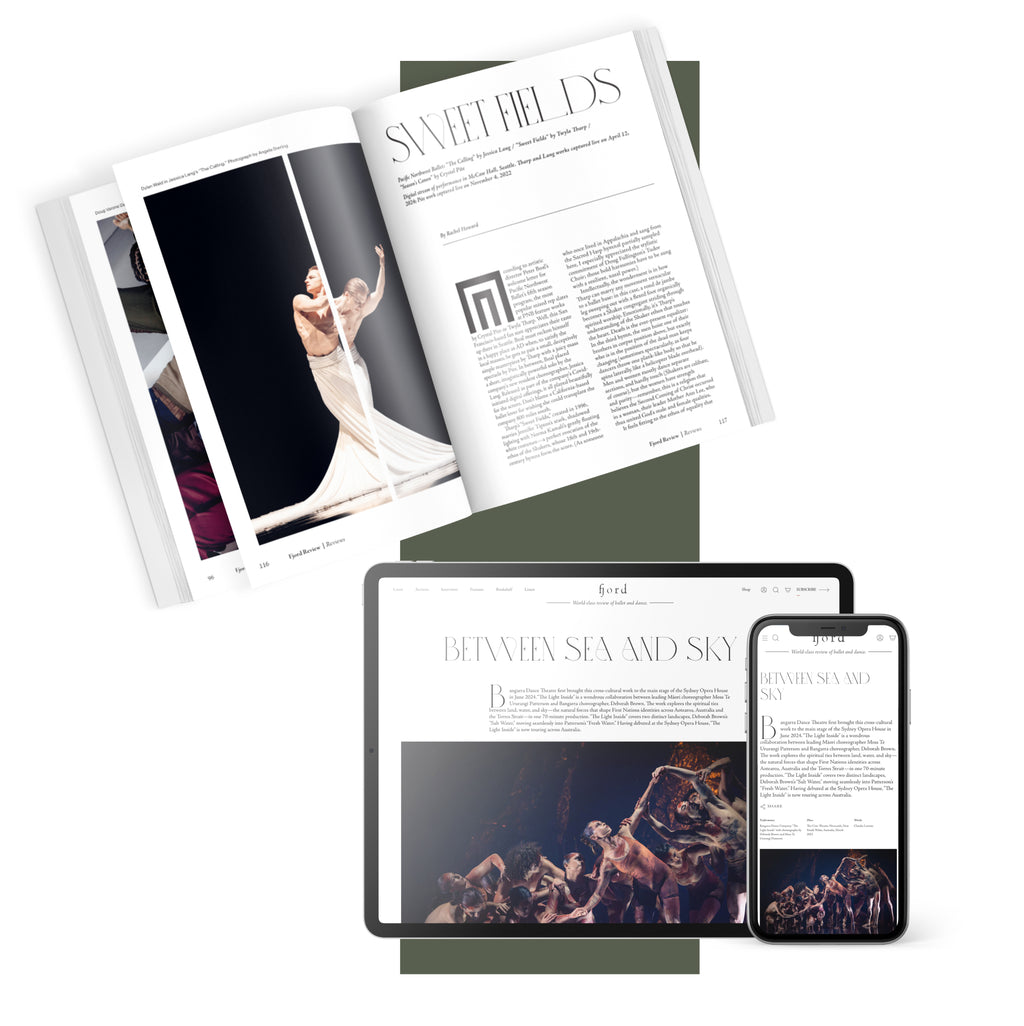Ultimate Release
Perhaps not since Mikhail Fokine’s 1905 iconic “The Dying Swan” has there been as haunting a solo dance depiction of avian death as Aakash Odedra Company’s “Songs of the Bulbul” (2024).
Continue Reading
World-class review of ballet and dance.
A ballet body is essentially a deformed body. The older and more experienced the dancer, the more evident–and beautiful–this deformation is. Years of daily classes, rehearsals, and performances transform the musculature, creating an instrument capable of performing magnificent feats. Still, watching a dancer at the beginning of their career is no less enchanting. One sees the potential, the future great performances, the body testing its training and, hopefully, triumphing. Stardom or perhaps injury or perhaps a career on the sidelines awaits; nevertheless, the possibility of all three hums within each and every movement. In short, it’s exciting.
Performance
Place
Words



“Uncommonly intelligent, substantial coverage.”
Your weekly source for world-class dance reviews, interviews, articles, and more.
Already a paid subscriber? Login

Perhaps not since Mikhail Fokine’s 1905 iconic “The Dying Swan” has there been as haunting a solo dance depiction of avian death as Aakash Odedra Company’s “Songs of the Bulbul” (2024).
Continue ReadingDance, at its best, captures nuance particularly well, allowing us to feel deeply and purely. In its wordlessness, it places a primal reliance on movement and embodied knowledge as communication all its own. It can speak directly from the body to the heart, bypassing the brain’s drive to “make sense of.”
Continue Reading“Racines”—meaning roots—stands as the counterbalance to “Giselle,” the two ballets opening the Paris Opera Ballet’s season this year.
Continue Reading“Giselle” is a ballet cut in two: day and night, the earth of peasants and vine workers set against the pale netherworld of the Wilis, spirits of young women betrayed in love. Between these two realms opens a tragic dramatic fracture—the spectacular and disheartening death of Giselle.
Continue Reading
comments